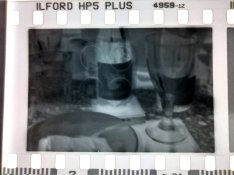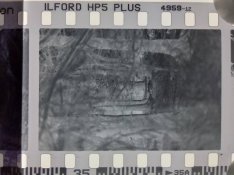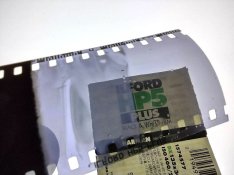spl
Member
The negatives attached have some problems. They are HP5+ exposed at 400, processed in Microphen.
Development: Second film from stock solution (so +10% time) Patterson tank, one film, 7 minutes, the tank was turned at the start and gently turned every 1 to 1.5 minutes. Was the agitation not sufficient? The developer solution also developed another film just fine an hour before.
Stop: Kodak stop bath 1 - 2 minutes
Fix: Ilford rapid fixer, about film number 6 on the litre fixer bottle mixed at 1+4 as recommended. 5 minutes.
Wash: Soft tap water 5 rinses and finished in Compard WAC Wetting Agent in clean soft tap water
Dry: Rubber Patterson squeegee and hang to dry.
All chemicals were mixed in the last couple weeks and well in date, developer was mixed that day.
Because I was reusing stock developer (As opposed to one-shot) I may have filled the patterson tank rather high thinking it was irrelevant.
I don't have much experience developing but didn't have these problems with Rodinal one-shot 1+50, 300 ml for one film.
Problems:
Streaks may be aligned with sprocket holes 4-1 4-2
When held with light side-on the cellophane appears to have nasty streaks 4-3
My moon got smeared, a long black streak comes from the side of it, more pronounced than I can photograph 4-4
Development: Second film from stock solution (so +10% time) Patterson tank, one film, 7 minutes, the tank was turned at the start and gently turned every 1 to 1.5 minutes. Was the agitation not sufficient? The developer solution also developed another film just fine an hour before.
Stop: Kodak stop bath 1 - 2 minutes
Fix: Ilford rapid fixer, about film number 6 on the litre fixer bottle mixed at 1+4 as recommended. 5 minutes.
Wash: Soft tap water 5 rinses and finished in Compard WAC Wetting Agent in clean soft tap water
Dry: Rubber Patterson squeegee and hang to dry.
All chemicals were mixed in the last couple weeks and well in date, developer was mixed that day.
Because I was reusing stock developer (As opposed to one-shot) I may have filled the patterson tank rather high thinking it was irrelevant.
I don't have much experience developing but didn't have these problems with Rodinal one-shot 1+50, 300 ml for one film.
Problems:
Streaks may be aligned with sprocket holes 4-1 4-2
When held with light side-on the cellophane appears to have nasty streaks 4-3
My moon got smeared, a long black streak comes from the side of it, more pronounced than I can photograph 4-4





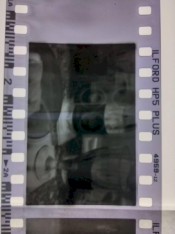
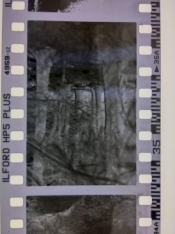
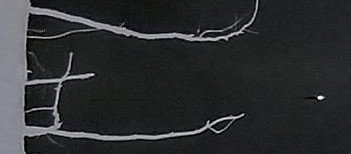
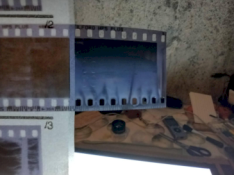

 I didn't use it for this development though, and I'll never use it again.
I didn't use it for this development though, and I'll never use it again.
 .
.